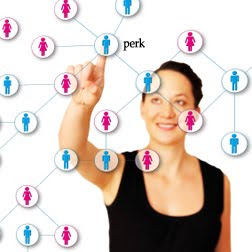It doesn't mean you always have to pony up dollars for celebrities and semi-public people to increase brand exposure. You could take an organic approach in attracting third-party voices around your brand and the process to do so will result in deeper, more meaningful relationships.
In the long term, it could also help inoculate your brand against the rising cost of social media stars as brands compete for the same talent and make influencer marketing akin to any other media buy. Of course, this doesn't mean anyone should bow out all together. Influencers have their place.
All it means is that marketers need to remember that a "nobody" can be just as influential as the current somebody. The right person with the right passion only needs a lift to gain real attention.
How to make a topic influencer in five steps.
• Engagement. Discover customers, advocates, and topic enthusiasts who have an authentic passion for your product or service. They may not be "popular" but their passion for your brand is infectious in ways that paid or perked influencers will never deliver. Give these fans some real attention by letting them know your organization noticed.
• Education. Every exchange is an opportunity to learn more about your clients while they learn more about your product or service. Successful professionals have always relied on the art of conversation to learn more about their clients and find new ways to provide real value. Take it a step further online and help people with an interest in your industry become experts.
• Exposure. Almost everyone appreciates a call out for something they say, write, or share online. When they say it about you, make sure you take it a step further than a thank you. Share and provide some context into why it is worthwhile to your organization's audience. If it happens to be about your product or service, even better. Third-party endorsements don't have to be from celebrities.
• Exclusivity. There is no better way to make someone an overnight influencer than giving them something in advance of everyone else. It doesn't always matter what that might be — it could be some news, a video clip, an invitation, or a working demo. The fact they have it first will move them to the head of the class — even if nobody saw them as an influencer before.
• Endorsement. Third-party endorsements don't happen in one direction. As several influencers are nurtured from the ground up, any organization can call them out as rising stars in the industry. Boosting their credibility as someone who knows your products or services as well as (or better than) your organization will lift them to be on par with almost anyone considered an influencer today.
Many of the influencers that organizations want to appease today got their start in much the same way. Nobody really noticed them until an organization or other so-called influencers gave them a lift with a call out, conversation, or mutually beneficial exposure. For many after that, a singular semi-exclusive offer (ranging from cameras to glasses and software to soda) catapulted them upward.
Even those who had the benefit of building a personal brand on the back of a big brand followed a similar path. The only real difference is that the organization accelerated the steps, with their employment or affiliation acting as an immediate endorsement. It doesn't take all that much.
So instead of only thinking in terms of influencer marketing — how to reach existing influencers — organizations need to start thinking in terms of influencer making too. Where aspiring influencers make a big difference is that their brand affinity and the strength of their relationship with a smaller pool of followers puts them in a prime position to quickly build an audience with a level of authenticity that few professional influencers retain over time — at least with the same semblance of passion.









































